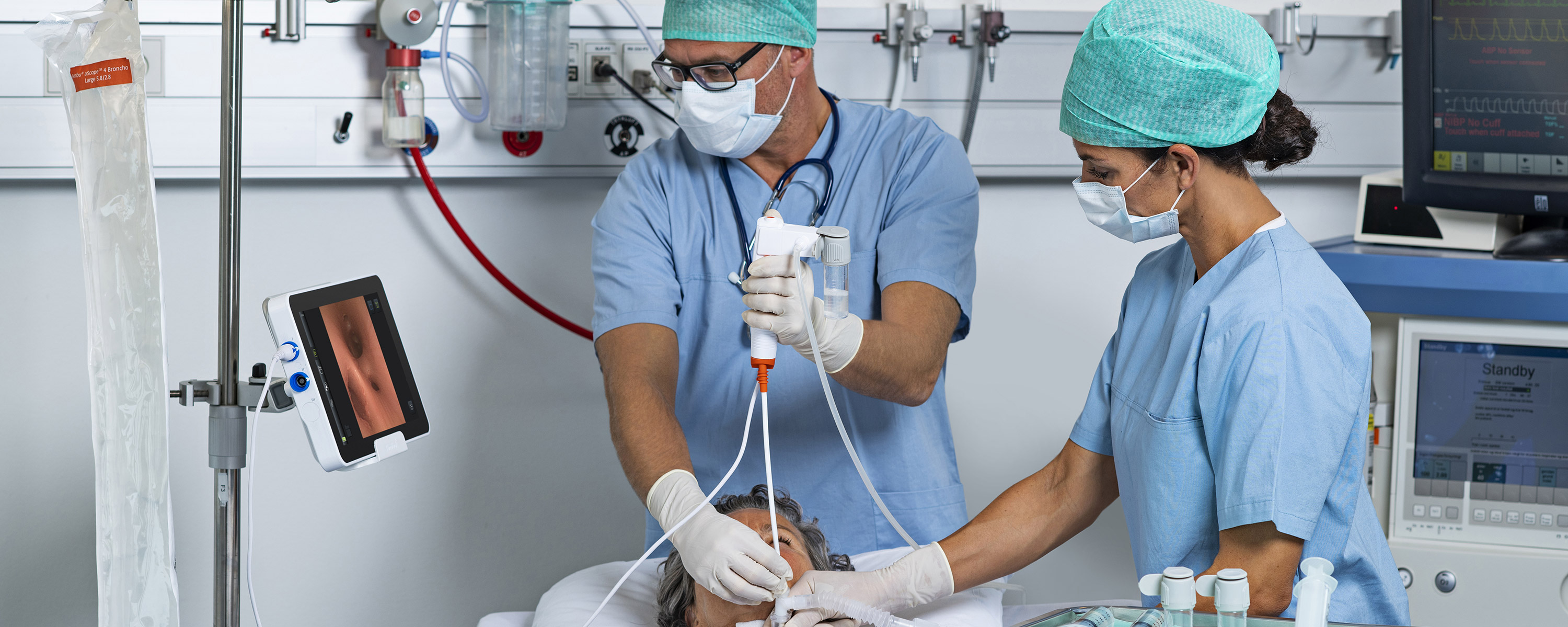
Single-use endoscopes are projected to be a $2.5 billion business by 2025, given the growth in clinical, hospital use and diagnostic center use, experts say.
Among the drivers of that demand: the rise in chronic obstructive pulmonary disease (COPD), which ranks as the third-leading cause of death globally, and more cases of lung cancer.
Also, an aging population requires more ICU admissions, meaning greater demand for airway assessments in coming years. That’s according to Dr. Suveer Singh, a respiratory and critical care physician and interventional bronchoscopist in London, who moderated a recent webinar on the clinical role of single-use bronchoscopy.
“It would seem there’s been a natural transition from reusable to single-use scopes over perhaps five to seven years,” said Singh in the webinar, sponsored by the World Association for Bronchology and Interventional Pulmonology (WABIP) and Ambu. “Why has this happened is one of the questions. Well, convenience is the most obvious explanation for it — the fact that you’ve got a carriable, portable, plug- and-play system that provides adequate optics.“
Additional demand drivers, according to Singh, are:
The webinar explores single-use in the ICU and bronchoscopy suite, analyzes research on contamination from reusable scopes, and compares costs of single-use vs. reusable scopes.
A Look at the Research
Dr. Sonali Sethi, director of interventional pulmonology at the Cleveland Clinic, summarizes several key studies of reprocessed, reusable endoscopes:
“Contamination is occurring more often than we think, and quality improvements need to be made now,” Sethi said. “We no longer, after looking at these papers, can sit and ignore these issues. We actually need to start addressing them.”
Ambu recently announced that its fifth-generation bronchoscope — the Ambu® aScope™ 5 Broncho HD System, designed for the bronchoscopy suite — received European regulatory clearance, with other geographic markets to follow.
Regulatory agencies have taken notice of the power of single-use endoscopes, especially as the global novel coronavirus pandemic has put the spotlight on infection control.
In June 2021, the U.S. Food and Drug Administration (FDA) issued a safety communication recommending that clinicians consider using single-use bronchoscopes in cases where there is high risk of infection and where there is no support for immediate reprocessing. The FDA also recommended considering sterilization instead of high-level disinfection when possible.
“What we know today is that reusable flexible bronchoscopes pose a risk of nosocomial infection transmission between patients with the identification of human proteins, DNA and pathogenic organisms on fully reprocessed scopes, despite us doing full adherence to guidelines,” Sethi said in the webinar. “The time to start thinking about switching to single-use bronchoscopes in our suites, in these situations, is now.”
The Cost Advantage of Single-Use
Dr. Jonathan S. Kurman, director of interventional pulmonology at the Medical College of Wisconsin, cited research that the cost per procedure of using a reusable flexible bronchoscope ranged from $318 to $351 per procedure. Shifting to single-use products can yield a savings of between $17 and $81 per case.
“When you multiply that by the number of cases that are performed annually, done in a large hospital, that can start to add up to significant savings very quickly,” Kurman said.
He also countered the perception that single-use devices are worse for the environment than reusables.
“People fail to realize all of the energy and detergent and supplies that go into reprocessing reusable scopes,” he said. “When you compare those side by side, it’s actually the reprocessing of the reusable scopes that has the greater environmental impact than disposing of a single-use device.”


